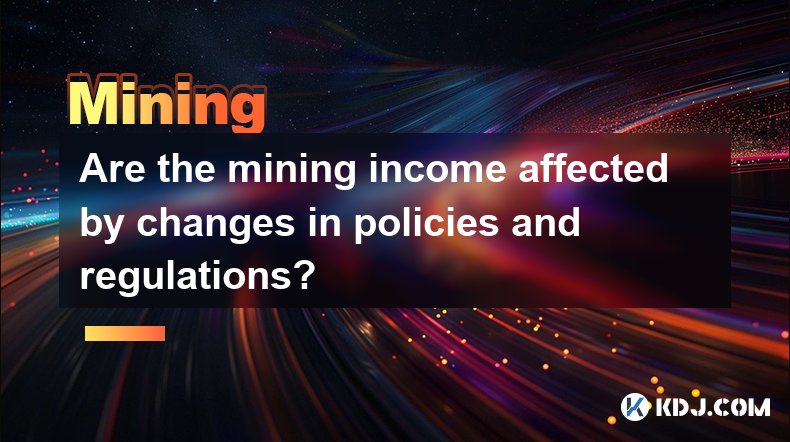-
 Bitcoin
Bitcoin $82,725.6690
-3.02% -
 Ethereum
Ethereum $1,860.4950
-1.79% -
 Tether USDt
Tether USDt $0.9995
0.00% -
 XRP
XRP $2.1261
-4.12% -
 BNB
BNB $606.1318
-3.65% -
 Solana
Solana $126.1586
-4.04% -
 USDC
USDC $1.0000
0.00% -
 Dogecoin
Dogecoin $0.1721
-5.33% -
 Cardano
Cardano $0.6750
-4.08% -
 TRON
TRON $0.2340
1.07% -
 Toncoin
Toncoin $3.7056
-6.80% -
 Chainlink
Chainlink $13.8095
-4.02% -
 UNUS SED LEO
UNUS SED LEO $9.5880
-1.23% -
 Avalanche
Avalanche $20.1995
-1.05% -
 Stellar
Stellar $0.2694
-2.48% -
 Shiba Inu
Shiba Inu $0.0...01285
-4.19% -
 Sui
Sui $2.3213
-8.98% -
 Hedera
Hedera $0.1708
-7.14% -
 Litecoin
Litecoin $86.7167
-1.56% -
 Polkadot
Polkadot $4.1073
-5.03% -
 MANTRA
MANTRA $6.2984
-0.89% -
 Bitcoin Cash
Bitcoin Cash $308.0076
-1.14% -
 Bitget Token
Bitget Token $4.6239
-2.99% -
 Pi
Pi $0.7976
-3.35% -
 Dai
Dai $0.9998
-0.02% -
 Ethena USDe
Ethena USDe $0.9993
0.02% -
 Hyperliquid
Hyperliquid $12.8969
-6.66% -
 Monero
Monero $216.0442
-2.07% -
 Uniswap
Uniswap $6.1131
-2.88% -
 Aptos
Aptos $5.3780
-2.61%
Are the mining income affected by changes in policies and regulations?
Cryptocurrency mining profitability hinges on volatile prices and is heavily influenced by constantly evolving national and international regulations impacting legality, taxation, energy costs, and consensus mechanisms.
Mar 24, 2025 at 11:43 pm

Key Points:
- Mining profitability is directly tied to cryptocurrency prices. Price drops significantly reduce income.
- Regulatory changes can impact mining operations, including legality, taxation, and energy costs.
- Government policies on energy consumption directly influence mining operations, particularly in regions with strict environmental regulations.
- Changes in the cryptocurrency's consensus mechanism can alter mining rewards and efficiency.
- The legal framework surrounding cryptocurrency mining varies widely across jurisdictions, impacting profitability and operational viability.
Are Mining Income Affected by Changes in Policies and Regulations?
Yes, absolutely. The cryptocurrency mining landscape is highly sensitive to changes in policies and regulations at both the national and international levels. These changes can dramatically impact mining income, sometimes even rendering operations unprofitable or outright illegal. The impact manifests in several key areas.
Firstly, and perhaps most obviously, the price of the cryptocurrency being mined is paramount. If the price plummets, mining income drops proportionally, even if the cost of electricity and hardware remains constant. A sustained price decline can easily turn a profitable operation into a loss-making one. This is independent of regulatory changes, but regulatory uncertainty can exacerbate price volatility.
Secondly, the legal status of cryptocurrency mining is crucial. Some countries have outright banned cryptocurrency mining, making it illegal and exposing miners to significant penalties. Others have implemented restrictive regulations, such as high taxes on mining income or limitations on energy consumption. These directly impact profitability. A sudden ban could lead to the complete loss of investment.
Thirdly, governmental policies on energy consumption heavily influence mining operations. Many governments are increasingly concerned about the environmental impact of cryptocurrency mining, particularly its energy-intensive nature. This concern is often translated into policies like carbon taxes, stricter environmental regulations, or limitations on access to affordable electricity. These policies directly increase operational costs, reducing profitability.
Moreover, changes within the cryptocurrency's own mechanisms can also impact mining income. For example, a shift in the consensus mechanism, such as a move from Proof-of-Work to Proof-of-Stake, can drastically reduce the demand for miners and thus the income they generate. Proof-of-Stake is far less energy-intensive and doesn't require specialized mining hardware.
Furthermore, the regulatory landscape varies greatly across different jurisdictions. What's permissible and profitable in one country might be illegal and heavily taxed in another. Miners must carefully consider the legal framework in their region of operation to ensure compliance and maximize profitability. The regulatory environment is constantly evolving, requiring miners to stay informed and adapt their strategies accordingly.
This uncertainty creates significant risk for cryptocurrency miners. The potential for regulatory changes to drastically alter the profitability of mining operations necessitates a thorough understanding of the legal and political climate in any given jurisdiction. A detailed cost-benefit analysis, taking into account potential future regulatory changes, is essential before investing in cryptocurrency mining. Failing to account for potential policy shifts can lead to significant financial losses.
The impact of regulation extends beyond direct bans or taxes. Uncertainty itself can be detrimental. If a government is considering new regulations, miners may hesitate to invest heavily, fearing future restrictions. This hesitancy can stifle growth and innovation within the industry. Clear, consistent, and predictable regulations are crucial for fostering a stable and thriving cryptocurrency mining sector. Conversely, inconsistent or rapidly changing regulations create uncertainty and risk, which discourages investment and innovation.
The fluctuating nature of cryptocurrency prices further compounds the risks associated with regulatory changes. A sharp price drop, coupled with unfavorable regulatory shifts, can quickly render a mining operation unsustainable. This highlights the need for diversification and risk management strategies within the cryptocurrency mining industry. Miners should constantly monitor both market trends and regulatory developments to adapt their strategies and mitigate potential losses.
The interplay between cryptocurrency price volatility and regulatory changes creates a dynamic and challenging environment for miners. Successful operation requires not only technical expertise but also a keen understanding of the political and legal landscapes in which they operate. Understanding and adapting to these shifts is crucial for long-term success in cryptocurrency mining. A proactive approach to risk management is essential for navigating this complex and ever-evolving industry.
Frequently Asked Questions:
Q: How do I find out about potential policy changes that might affect my mining operations?
A: Stay informed by regularly monitoring news sources focused on cryptocurrency regulation, government announcements related to energy policy and taxation, and publications from relevant regulatory bodies in your region.
Q: Can I relocate my mining operation to avoid unfavorable regulations?
A: Yes, but this involves significant logistical and financial costs. You must also ensure you comply with the regulations of your new location.
Q: What are some strategies to mitigate the risks associated with regulatory changes?
A: Diversification (mining multiple cryptocurrencies), hedging (using financial instruments to offset potential losses), and careful due diligence before choosing a mining location are all helpful strategies.
Q: Are there any international bodies working towards creating a unified regulatory framework for cryptocurrency mining?
A: Currently, there isn't a single, universally agreed-upon international framework. However, various organizations and international bodies are actively discussing and working towards developing more coordinated approaches.
Q: If a government bans cryptocurrency mining, what happens to existing operations?
A: The consequences vary widely depending on the specifics of the ban. It could lead to seizure of equipment, financial penalties, and the complete shutdown of operations. The legal ramifications are highly jurisdiction-specific.
Disclaimer:info@kdj.com
The information provided is not trading advice. kdj.com does not assume any responsibility for any investments made based on the information provided in this article. Cryptocurrencies are highly volatile and it is highly recommended that you invest with caution after thorough research!
If you believe that the content used on this website infringes your copyright, please contact us immediately (info@kdj.com) and we will delete it promptly.
- Bitcoin and crypto prices have dropped back as inflation fears and U.S. president Donald Trump’s tariff threats
- 2025-03-29 20:50:12
- XYZVerse ($XYZ) Project Merges the Worlds of Sports and Crypto, Attracting Significant Investor Interest
- 2025-03-29 20:50:12
- We're Already Looking for the Best Altcoins to Buy After Kip Herriage Pushed for GameStop to Pour $2.5B into Bitcoin
- 2025-03-29 20:45:11
- Bitcoin (BTC) price drops to the $80k range as it continues trading in a downtrend and falls 4%
- 2025-03-29 20:45:11
- Jagruta devi templay
- 2025-03-29 20:40:13
- Mutuum Finance (MUTM) Tokenizes Crypto Lending, Aims to Disrupt the Market
- 2025-03-29 20:40:13
Related knowledge

Quality requirements for capacitors and components of mining power supplies
Mar 29,2025 at 02:57pm
The Crucial Role of Power Supply Components in MiningMining cryptocurrencies, especially those using Proof-of-Work consensus mechanisms, demands significant computational power. This translates to a high power consumption, placing immense strain on the power supply units (PSUs) of mining rigs. The reliability and longevity of these PSUs are directly ti...

Analysis of the requirements for power supply interfaces for graphics card mining
Mar 29,2025 at 07:35pm
Understanding Power Supply Needs for GPU MiningGraphics card mining, particularly with high-end GPUs, demands substantial power. Understanding the power supply interface requirements is crucial for efficient and safe operation. Different GPUs have varying power consumption profiles and connector types. Failure to meet these requirements can lead to ins...

What power supply configuration is required for multi-graphics card mining
Mar 29,2025 at 11:08am
? Power Supply Needs for Multi-GPU Mining RigsMining cryptocurrency, particularly with multiple graphics cards (GPUs), demands a robust and reliable power supply. The power requirements aren't simply the sum of each GPU's TDP (Thermal Design Power). Several other components contribute significantly to the overall energy draw. Understanding these factors...

How to evaluate the load capacity of the power supply when the graphics card is mining
Mar 29,2025 at 11:14am
How to Evaluate the Power Supply Load Capacity When the Graphics Card is Mining Understanding Power Consumption in Cryptocurrency MiningCryptocurrency mining, particularly with GPUs, is a power-intensive process. Understanding your power supply's capabilities is crucial to prevent damage to your hardware and ensure stable operation. Insufficient power c...

How much power does a mining graphics card need to support
Mar 29,2025 at 04:14pm
? Power Consumption in Cryptocurrency MiningThe power consumption of a graphics card (GPU) used for cryptocurrency mining is a crucial factor determining profitability and operational costs. The power draw isn't a fixed number; it varies significantly depending on several key aspects of both the card itself and the mining operation. Understanding these ...

Profit Model and Equipment Optimization of GPU Mining
Mar 29,2025 at 06:35pm
Understanding the Profitability of GPU MiningGPU mining, particularly for cryptocurrencies like Ethereum (before the merge) and others using similar algorithms, involves using graphics processing units (GPUs) to solve complex mathematical problems, validating transactions, and earning cryptocurrency rewards. The profitability hinges on several intercon...

Quality requirements for capacitors and components of mining power supplies
Mar 29,2025 at 02:57pm
The Crucial Role of Power Supply Components in MiningMining cryptocurrencies, especially those using Proof-of-Work consensus mechanisms, demands significant computational power. This translates to a high power consumption, placing immense strain on the power supply units (PSUs) of mining rigs. The reliability and longevity of these PSUs are directly ti...

Analysis of the requirements for power supply interfaces for graphics card mining
Mar 29,2025 at 07:35pm
Understanding Power Supply Needs for GPU MiningGraphics card mining, particularly with high-end GPUs, demands substantial power. Understanding the power supply interface requirements is crucial for efficient and safe operation. Different GPUs have varying power consumption profiles and connector types. Failure to meet these requirements can lead to ins...

What power supply configuration is required for multi-graphics card mining
Mar 29,2025 at 11:08am
? Power Supply Needs for Multi-GPU Mining RigsMining cryptocurrency, particularly with multiple graphics cards (GPUs), demands a robust and reliable power supply. The power requirements aren't simply the sum of each GPU's TDP (Thermal Design Power). Several other components contribute significantly to the overall energy draw. Understanding these factors...

How to evaluate the load capacity of the power supply when the graphics card is mining
Mar 29,2025 at 11:14am
How to Evaluate the Power Supply Load Capacity When the Graphics Card is Mining Understanding Power Consumption in Cryptocurrency MiningCryptocurrency mining, particularly with GPUs, is a power-intensive process. Understanding your power supply's capabilities is crucial to prevent damage to your hardware and ensure stable operation. Insufficient power c...

How much power does a mining graphics card need to support
Mar 29,2025 at 04:14pm
? Power Consumption in Cryptocurrency MiningThe power consumption of a graphics card (GPU) used for cryptocurrency mining is a crucial factor determining profitability and operational costs. The power draw isn't a fixed number; it varies significantly depending on several key aspects of both the card itself and the mining operation. Understanding these ...

Profit Model and Equipment Optimization of GPU Mining
Mar 29,2025 at 06:35pm
Understanding the Profitability of GPU MiningGPU mining, particularly for cryptocurrencies like Ethereum (before the merge) and others using similar algorithms, involves using graphics processing units (GPUs) to solve complex mathematical problems, validating transactions, and earning cryptocurrency rewards. The profitability hinges on several intercon...
See all articles






















































































